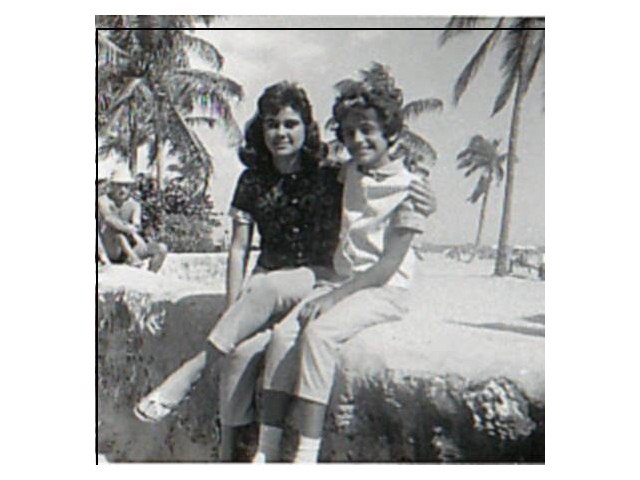I was born in New York City to Hispanic-American parents. Osvaldo Hernandez, my father, arrived in the United States in the 1940s, served in the U.S. Army and met Maria, my mother, in 1950.
They married and two years after my birth we traveled to Havana, Cuba, where I stayed and was raised by my grandmother, a Canary Islands native. I lived in a middle-class Havana suburb and attended Cambridge School, where I received English and Spanish instruction.
Unexpected changes in Cuba occurred, however, when Fidel Castro took over in January 1959. In 1962, seeing that the situation on the island had worsened, my father requested my departure, through the Canadian embassy.
On Jan. 25, 1963, at age 11, I returned to the United States on the last American Red Cross flight for U.S. citizens. I have never forgotten my unpleasant exit from the Havana airport, where militia men searched me, kept my valuables and called me gusana (a disrespectful term for Americans that means “earthworm”) and gringa before I prepared to board the plane.
I traveled alone, but was warmly received at Miami International Airport by my father, aunt, uncle and cousin, who were residing on Alton Road in Miami Beach.
The city of Miami Beach became my new home. My father and I were the only American citizens who spoke English in my immediate family. My school days happily unfolded at Central Beach Elementary. At Ida Fisher Junior High School, I learned how to swim at Flamingo Park’s pool and practiced tumbling at the school’s gym.
My saddest experience at that time was hearing the announcement, over the loud speaker, that “President Kennedy has been shot!” It was Nov. 22, 1963.
During the 1960s, South Beach consisted mainly of small stores that sold beach wear, surf equipment and souvenirs. When I was 12, I would assist a souvenir store owner by arranging the merchandise and assisting tourists with their purchases – for 25 cents an hour.
After my part-time job, I would join my friends at the Cameo Theater on Washington Avenue and 14th Street for an ice cream and a movie. The 25-cent ticket admitted me to popular films of the time, such as Psycho and The Great Escape.
A half-dollar Kennedy coin was my weekly allowance. When I had saved a dollar, I would embark on a visit to downtown Miami on Saturdays, via public bus. I loved viewing the store window displays of Kress, McCrory’s, Woolworth’s, Sears, Burdines, Baker’s, Lerner’s and Jackson Byron’s. Shopping trips with my father to Baker’s always led to a new pair of shoes with a matching handbag.
We also munched on sauerkraut hot dogs at the Sloppy Joe’s shop, next to the Tower Theater. At Jackson Byron’s, I bought my first 45 rpm record for 49 cents and began to collect music memorabilia. An ultimate treat was to watch a movie at any of the downtown theaters: the Olympia Theater, the Tower Theater and the Paramount Theater.
My most cherished Beatles experience occurred at the Paramount Theater where, with more than 100 other teenage girls, I eagerly watched the Beatles’ first feature-length motion picture, A Hard Day’s Night. I still have the admission ticket from this event.
The Beatles’ revolution in the United States had a profound influence on my musical preferences. On Feb. 13, 1964, I remember hearing on my pink transistor radio that the Beatles had landed at Miami International Airport to tape their second appearance on The Ed Sullivan Show.
A local Miami radio station, 560 WQAM, and its announcer, Rick Shaw, heavily promoted the Beatles’ arrival. I purchased a promotional pamphlet of The Beatles from WQAM for one dollar. Many students did not attend school on that day, hoping to catch a glimpse of them.
I fondly remember twisting with other teenagers to the sounds of Chubby Checker, The Beach Boys and The Beatles at the Miami Beach Recreational Center on Tuesday nights.
The Miami Beach High School Ensemble and the Acapella Choir fulfilled my interest in music. Rehearsing for school performances and singing at the Fontainebleau Hotel were standard practice for all chorus members. My overnight stays at the San Souci Hotel – to prepare for district music competitions – were exhilarating.
In June 1969, the Jackie Gleason Theater was the host of my graduation ceremony. Throughout my teens, I had visited the theater, attending rock music concerts by Three Dog Night, The Who, Chicago and Rare Earth.
I used to ride a tram from Alton Road to Washington Avenue, through the Lincoln Road Mall. As we traveled aboard the tram, we eyed the variety of luxury stores such as Lillie Rubin, where TV personalities purchased exclusive evening wear.
Finally, my recollection of the Miami Beach Lions Club is of utmost importance. The Lions Club funded a college tuition grant that enabled me to further my education at Miami Dade Community College and Florida Atlantic University.
I majored in education, began as a teacher, and now serve as a director for the public schools. I will always appreciate how the Miami Beach Lions Club helped shape my future.
The city of Miami has been my home for the past 36 years. I still hold a deep affection, however, for the Beach.
I now work in downtown Miami and own a condominium in South Beach. I cherish my precious preteen and teenage years’ memories of South Beach during the groovy and colorful ’60s.
My father, Osvaldo, passed away in 2005 at 84. He last lived on Meridian Avenue. He truly loved the Beach as much as I did.

